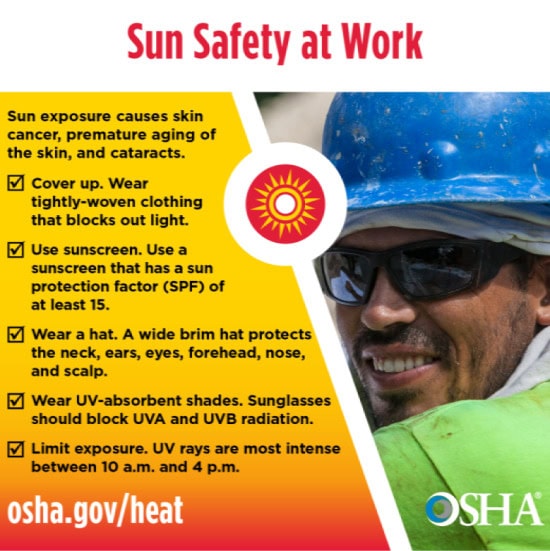OSHA Announces Heat Illness Protection Program

The Occupational Safety and Health Administration (OSHA) has announced a National Emphasis Program (NEP) focused on heat hazards, effective April 8. Under the NEP, OSHA will be conducting proactive inspections for heat-related hazards – in both outdoor and indoor work environments. It thus behooves employers to ensure they have implemented appropriate safety measures to protect employees from such hazards before potentially coming under OSHA’s attention.
Namely, the NEP outlines certain triggers for heat-related inspections:
- When conducting other, non-heat-related investigations, OSHA will open a heat-related inspection into any hazardous heat conditions observed or reported.
- When the heat index is expected to be 80 degrees Fahrenheit or more (so-called “heat priority days”), OSHA will inquire about heat-related hazard prevention programs during inspections.
- When the National Weather Service (NWS) has announced a heat warning or advisory for a local area, OSHA will use neutral, objective criteria to select employers for pre-planned inspections in high-risk industries in that area – including foundries, warehouses, farming, waste collection and residential construction, among many others.
- When the Wage & Hour Division (WHD) of the Department of Labor (DOL) is investigating reported inadequate working or living conditions or wages, WHD is encouraged to refer information about potential heat-related hazards to OSHA.
Bottom line: employers should be cognizant, particularly on hot days, that OSHA may come knocking. And if that happens, the NEP mandates several steps OSHA must take in inspecting heat-related hazards, including but not limited to:
- Review injury and illness logs and incident reports for entries indicating heat-related illness
- Review records of heat-related emergency room visits and/or ambulance transport, even if hospitalization did not occur
- Interview workers for heat illness symptoms like headache, dizziness, fainting, dehydration, etc.
- Determine if the employer maintains a heat illness and injury prevention program, and consider whether the program addresses hydration, breaks, shade, acclimatization, training, and other relevant policies
- Document relevant conditions, such as the heat index, any NWS heat alerts, type of heat source (e.g., direct sunlight, proximity to furnace), any injured employee’s exertion level and duration of exposure to heat, and the like
The NEP marks the most recent in a series of efforts by OSHA to address heat hazards in the workplace. Last fall, OSHA announced a National Enforcement Initiative and published an Advanced Notice of Proposed Rulemaking, which is the first step on the long path to a federal heat standard.
Given OSHA’s keen focus on heat hazards, employer – especially those in the targeted industries – can consider several steps now to best protect themselves and their employees. For example, employers should ensure their safety policies address heat-related hazards; implement acclimatization periods for new employees who are not yet adjusted to working full days in high heat; develop a means to monitor the heat index and employee exposure to heat; and train employees on heat-related illness and emergency response.
For more information, click here to visit TRSA’s Advocacy Regulation page. If you have any questions, contact TRSA’s Vice President of Government Relations Kevin Schwalb at kschwalb@trsa.org.
